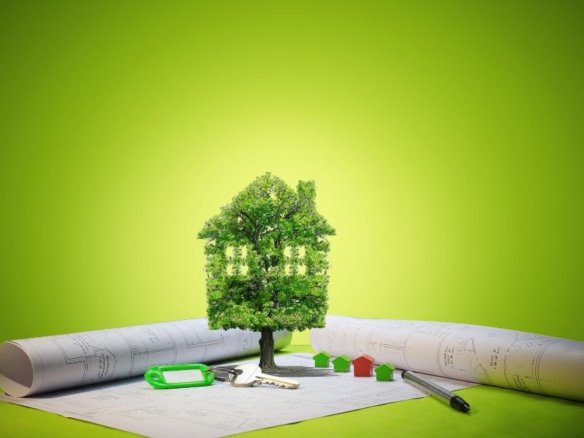Introduction
Gurgaon, often dubbed as the “Millennial City,” stands as a beacon of urban development within the National Capital Region (NCR) of India. Its strategic positioning and burgeoning corporate ecosystem have made it a magnet for businesses, professionals, and residents seeking opportunities in a dynamic urban landscape. As Gurgaon continues its rapid growth and transformation, the Gurugram Metropolitan Development Authority (GMDA) has embarked on an ambitious infrastructure development roadmap to cater to the evolving needs of its population. This article delves into the intricate tapestry of infrastructure developments underway in Gurgaon in 2024, illuminating key projects, strategic initiatives, and their profound implications for the city’s future.
Population Surge Projection and Strategic Plan:
Gurgaon anticipates a significant surge in its population, with projections estimating a staggering 5.5 million residents by 2041. In preparation for this demographic influx, the GMDA has crafted a holistic strategic plan aimed at fortifying the city’s infrastructure and services. This multifaceted plan encompasses vital sectors such as education, healthcare, public safety, recreation, and socio-cultural amenities, with the overarching goal of enhancing the livability and quality of life for all residents.
Education Infrastructure:
A cornerstone of Gurgaon’s infrastructure development plan is the bolstering of its education infrastructure. Recognizing the paramount importance of accessible quality education, the GMDA has set ambitious targets for educational institution establishment across the city. These targets include the creation of 750 nursery schools, 430 primary schools, and 686 secondary and senior secondary schools. Furthermore, plans are afoot for the establishment of three medical colleges, four engineering colleges, five non-professional colleges, and a veterinary institute. By expanding educational horizons, Gurgaon aims to empower every child with the opportunity for academic and personal growth.
Healthcare Facilities:
Ensuring access to quality healthcare services stands as another pivotal pillar of Gurgaon’s infrastructure development plan. The city is poised to enhance its healthcare infrastructure by erecting two general hospitals, a civil hospital, six veterinary hospitals, 210 specialty hospitals, diagnostic centers, 250 dispensaries and clinics, 25 nursing homes, and maternity centers by 2041. The overarching objective is to ensure that government-run healthcare facilities are within a 3-kilometer radius, thus improving healthcare accessibility and fostering well-being across the city.
Public Safety:
Bolstering public safety is a paramount concern for Gurgaon’s infrastructure development agenda. The city is steadfast in its resolve to fortify law enforcement capabilities by establishing additional police posts, particularly in areas with housing societies. Additionally, plans are underway to construct six new fire stations and institute a women’s safety cell to address gender-specific safety concerns. By fortifying public safety measures, Gurgaon aims to cultivate a secure and conducive environment that empowers residents to thrive and prosper.
Recreation Infrastructure:
Promoting recreational activities and sports infrastructure occupies a central position in Gurgaon’s infrastructure development narrative. The city is poised to develop sports complexes, stadiums, and school sports infrastructure that will be accessible to the community at large. Efforts are also underway to ensure that parks, playgrounds, and green spaces are readily available within colonies, providing residents with ample opportunities for leisure and recreation. By investing in recreational infrastructure, Gurgaon seeks to foster a culture of wellness and vitality among its residents, thus enriching overall quality of life.
Socio-Cultural Facilities:
Gurgaon recognizes the pivotal role of socio-cultural amenities in nurturing a vibrant and inclusive community. As part of its infrastructure development blueprint, the city aims to develop cultural centers, old-age homes, orphanages, hostels for working individuals, and cremation and burial grounds. These facilities cater to the diverse needs of residents and contribute to the rich social fabric of the city. By providing essential socio-cultural amenities, Gurgaon aims to foster a supportive and cohesive community where individuals from all walks of life can thrive and flourish.
Addressing Disparities and Promoting Community Engagement:
Gurgaon’s infrastructure development strategy acknowledges the disparities in educational and healthcare facilities between older and newer sectors of the city, as well as neighboring areas like Manesar. To bridge these gaps, the plan proposes audits of existing institutions and the establishment of additional facilities in underserved areas. Furthermore, measures to enhance early childhood education and childcare services aim to support working parents and promote community engagement. By addressing disparities and fostering inclusivity, Gurgaon aims to cultivate a more equitable and cohesive city where all residents have access to essential services and opportunities for growth.
Infrastructure Development and Real Estate Market:
The infrastructure developments unfolding in Gurgaon carry significant implications for the city’s real estate market. Initiatives such as the Global City project and the expansion of transport networks are poised to propel growth in both the commercial and residential segments. Enhanced connectivity, improved amenities, and a focus on sustainable development are expected to attract investors and homebuyers, thus propelling the city’s real estate sector forward. As Gurgaon’s infrastructure continues to evolve, the city’s real estate market is primed for sustained growth and development, offering a plethora of opportunities for investors and stakeholders alike.
Real Estate Opportunities and Government Initiatives:
The Real Estate Regulatory Authority (RERA) has provided a new boost of confidence to homebuyers, ensuring transparency and accountability in property transactions. Furthermore, the state government’s proactive approach, evidenced by twice-yearly increases in circle rates to accommodate the high sale-purchase ratio, underscores the robust growth trajectory of Gurgaon’s real estate sector. Proposals for major infrastructure projects such as the Dwarka Expressway, KMP, DMIC, and initiatives like Jungle Safari and Global City further enhance the city’s allure as a prime investment destination.
Conclusion:
Gurgaon’s evolution as a vibrant metropolis is a testament to its unwavering commitment to progress and innovation. As the city continues to forge ahead on its path of growth and transformation, strategic infrastructure developments serve as the cornerstone of its future prosperity. By prioritizing education, healthcare, public safety, recreation, and socio-cultural amenities, Gurgaon is laying the groundwork for a thriving and inclusive urban landscape. Simultaneously, the city’s burgeoning real estate sector, bolstered by government initiatives and investor confidence, promises abundant opportunities for growth and prosperity. As Gurgaon navigates the challenges and opportunities of the 21st century, it emerges as a shining beacon of progress in the heart of the National Capital Region.





Join The Discussion